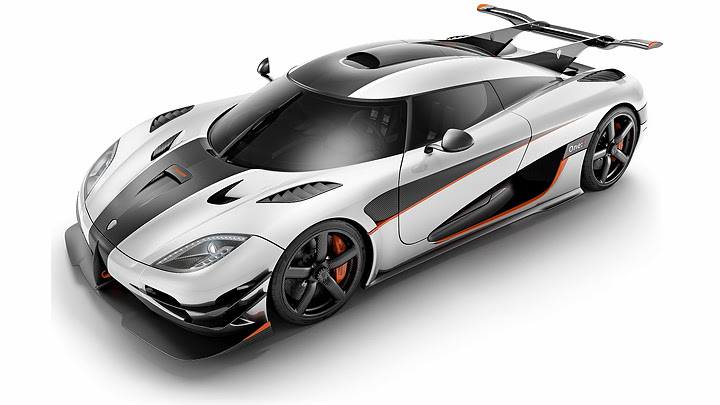
Founded in 1994, this Swedish automaker gets really interesting to observe for the fact that it makes the best of having no strings attached. Since Koenigsegg doesn’t have to respect design traditions, doesn’t deal with strong opinions concerning alternative power nor needs to follow the corporate rules that come when the automaker is owned by multinational companies, it becomes free to seek its goal with much more concentration than rivals like Porsche, to give an example. The results couldn’t be much different from what it actually achieved in the past few years: CCR was the fastest production car in the world in 2005 (388.9 km/h), CCX has the best 0-300-0 km/h time (29s2) and Agera R the best 0-300 km/h time (14s5).
Adding more years of research and experience to that background is what resulted on Koenigsegg’s debut for the latest Geneva Auto Show. If the first glances lead you to notice that One:1 resembles too much its siblings, such as CC, Agera and the sportier variations of each of those, you’re right. The automaker sticks to these design cues precisely because they were already used on its older vehicles, because this is a proof of how efficient they are. In fact, you’re more than right when it comes to the new car because it’s actually a modified Agera R. There are some visual changes, like at color schemes and aerodynamic accessories, but they’re only another expression of what the company truly seeks: high performance, and nothing more.






But what exactly could be challenging enough for an automaker which is already so accomplished? After solving the matter of “being fast”, One:1 represents Koenigsegg’s incursion into the world of being fast as well as being efficient. Not in ways that lead to electric propulsion or to smaller engines, but in the way that, once again, seeks high performance and nothing more: increasing the power while reducing the weight. The new car’s name comes from the fact that it weighs 1,341 kg and generates 1,341 PS of power (or 1,329 hp), which reaches a proportion thought impossible until not so long ago. If you want to have some comparison basis, each hp carries 15,5 kg at a Volkswagen up!, while an Opel Astra takes that number to around 11,9 kg/PS and a Maserati Ghibli to 5,1 kg/PS.
What makes that ratio so difficult to achieve is mostly containing the weight, rather than increasing the power, due to the simple fact that the car can take nothing but essential items. On the other hand, such effort is rewarded with the other fact that having so much power hauling such little weight results on an unmatched behavior. One:1 uses a twin-turbo 5.0L V8, which has both half size and cylinders of Bugatti Veyron’s propeller and reaches 143 hp more. Once again, this engine came from Agera and received some changes, like bigger turbo boost pressure. It uses central position and is paired to rear-wheel-drive, electronic rear differential and the seven-speed, paddle-shift transmission. Not to mention it’s able to burn gasoline, race fuel or E85.

Combined to the 738-lb-ft torque, all those horses deliver a level of performance that Koenigsegg expresses by releasing only the 0-400 kph time, which is twenty seconds. It also states that top speed wasn’t a priority for this car, but rumor has it it’ll break the production vehicle record – which, coincidentally or not, is currently held by Veyron. And as if expectations like that weren’t exciting enough, the most likely figure is only 440 kph because the Michelin tires simply can’t support higher speeds. Reaching such number includes the work of the exclusive aerodynamic package, whose biggest feature is the large adaptive rear wing: like on many other sports cars, it lowers itself on hard accelerations to reduce drag and raises while braking or cornering, for more downforce.
However, even more interesting is to know that driving One:1 won’t be fun only on straight lines. Koenigsegg’s intention was to fight vehicles like McLaren P1 over an entire track, combining hard-acceleration capabilities to the aforementioned improved turning and to an excellent braking, too. The latter is ensured by carbon-ceramic discs of up to 397 mm and six-piston calipers. They work behind carbon-fiber wheels and take the car from 400 kph to full halt in ten seconds. The only unfortunate fact about this car is that the brake talk needs to be extended to any desire you have of purchasing this car. Even if you had the millionary figure the automaker asks for it, this car will have only six units, and they’re already sold out.